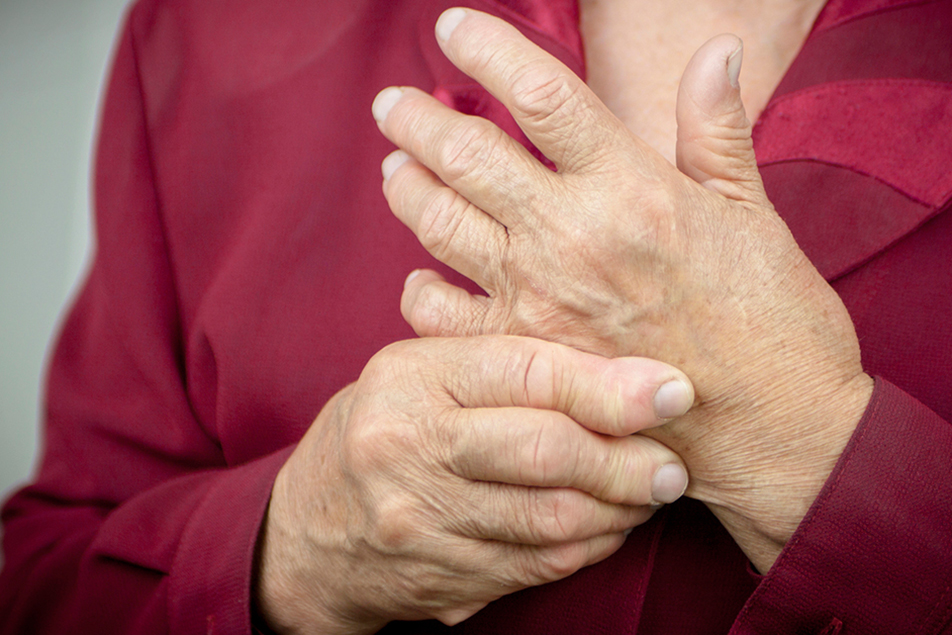For many who suffer from daily aches and pains, the chillier temperatures can mean an increase in discomfort. Laura Ferrell, VP of Patient Services, Parkview Ortho Hospital, has a handful of strategies for controlling arthritis throughout the winter months.
Well, according to Punxsutawney Phil, we are in for six more weeks of winter, which, depending on your outlook, can be a good or a bad prediction. It’s long been a belief of arthritis sufferers that the cold and snowy weather are to blame for increased pain in our joints. In fact, studies are showing that the change in the barometric pressure is truly the culprit to joint discomfort. Sudden drops in the barometric pressure can cause our joints to swell, placing more pressure on the nerves that control our pain centers. The more swelling you have, the more aches and pains you feel.
The good news is that there are ways to find some relief from the pain of arthritis in addition to prescription or over-the-counter medications.
Bundle up
Dressing warmly not only makes Mom happy, it goes a long way in lessening the aches and pains caused by arthritis. Wearing loose, layered clothing helps trap in your body’s heat and keep the joints warm. Some other dressing tips include:
- Wear gloves or mittens to soothe aching hands
- Wear a hat and scarf to protect your head and neck and trap in natural body heat
- Wear waterproof boots and warm socks to avoid getting cold and damp
- Thermal underclothing, leggings or tights help keep knees warm
Move
Not to a warmer climate, although that might be tempting. Lack of physical activity causes the joints to become stiff and sore. That's why when you first wake up in the morning it takes a while to get moving. If you exercise first thing in the morning, make sure to stretch and move around a little bit before you begin to loosen up those joints and prevent muscle damage. Walking is an excellent exercise to keep the joints mobile. Not only are those mall walkers taking care of their hearts, but they receive the additional benefit of increasing their overall strength and flexibility in their muscles and joints. So, believe it or not, exercise and activity actually ease arthritis pain. Other activities, such as riding a bike, swimming and dancing are great alternatives to consider, and they don’t feel like exercise.
Weight management
Losing weight is hard enough, especially in the winter because all we want to do is hibernate inside, wrapped in a blanket, drinking hot cocoa and avoiding the cold. And why are all the good holidays in the winter, anyway? But the reality is the more we weigh, the more weight our joints have to carry and the more pain we experience. Minor changes in your diet combined with regular exercise will help you lose weight and ease the wear and tear on your joints.
Other things to consider
If you take an over-the-counter or prescription medication for arthritis pain, make sure to take them about 30 minutes before you begin exercising to give them enough time to kick in.
Stay hydrated. You can sweat as much in the winter as you do any other time of the year, so make sure to drink plenty of water throughout the day.
Be safe! Wear reflective clothing or tape and appropriate shoes when walking outside, and carry your cell phone if you have one. Make sure to protect your skin by wearing a hat and scarf.
They say it only takes doing something 21 consecutive days to form a habit, so why not start today and get moving? Besides, embracing this approach will get you three weeks closer to the end of winter, according to a very reliable and “shadowy” source.




